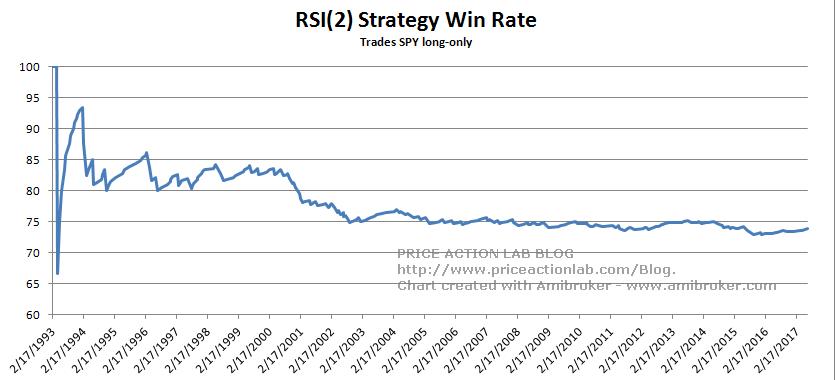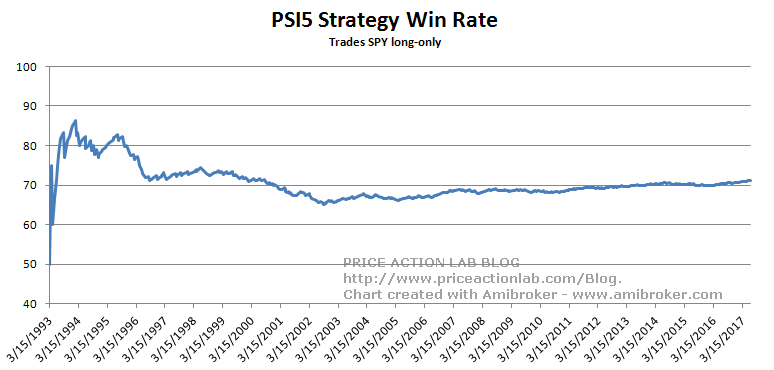Visual chartists, also known as noise traders, in the process of defending a method with a low win rate claim that high win rate strategies do not exist. When presented with evidence to the contrary, they argue that a high win rate is non-stationary. In the article, we present examples that refute this claim.
In another article, we presented three examples of trading strategies with high win rates: two short-term and one longer-term. One of the strategies has been in the public domain since at least 2003.
The main response on Twitter by some revolved around the non-stationarity of the win rate. This is a valid argument because if the win rate is non-stationary, then any associated strategy may not be robust. However, low win rates can also vary widely, and this is more of a problem with related trading strategies such as visual charting and naïve trend-following. For example, although a chart pattern trader expects 2 winners in 4 trades on average, a long streak of consecutive losers can occur, and the win rate can drop to 25% or even lower. In this case, the risk of ruin increases substantially.
Below is a chart of how the win rate of the popular RIS2 strategy (first published by Cesar Alvarez and Larry Connors) has evolved in SPY ETF daily data since its inception.
After a period of fluctuations, apparently at higher levels, since 2003, the RSI2 win rate has stabilized around 75% and never fallen below 72%. This is true for a strategy that has been in the public domain for more than 15 years and has several variants that are widely traded.
Below is a chart of the win rate of our proprietary PSI5 strategy in SPY ETF daily data since inception. Note that this strategy is based on a formula from a graduate text in probability theory and is not data-mined.
The win rate of the PSI5 strategy also fluctuated at higher levels above 80% in the 1990s and reached a low of about 65% in 2003. Since then, it has stabilized close to 70%.
Therefore, as was demonstrated above with two specific examples, a high win rate can be fairly stationary for extended periods. The argument made by low-win rate promoters against stationarity is, in many cases, motivated by ignorance. Note that no condition is permanent in the markets due to changing dynamics. However, non-stationarity should be a more serious problem for low-win rate strategy promoters because the impact on profitability can be more adverse.
If you found this article interesting, I invite you to follow this blog via any of these methods: RSS or Email, or follow us on Twitter
If you have any questions or comments, happy to connect on Twitter: @mikeharrisNY
Charting and backtesting program: Amibroker
Technical and quantitative analysis of Dow-30 stocks and 30 popular ETFs is included in our Weekly Premium Report. Market signals for longer-term traders are offered by our premium Market Signals service. Mean-reversion signals for short-term SPY traders are provided in our Mean Reversion report.








